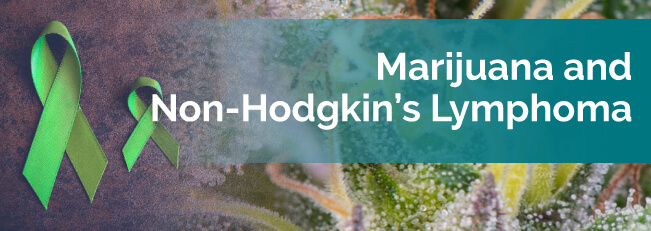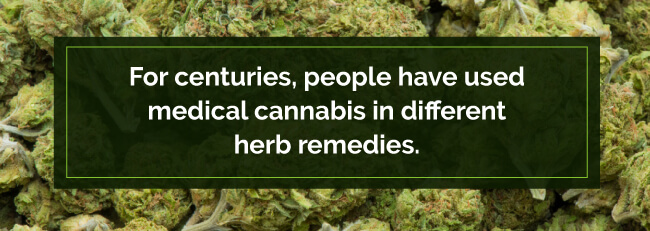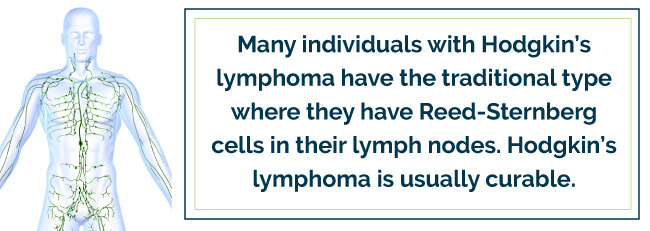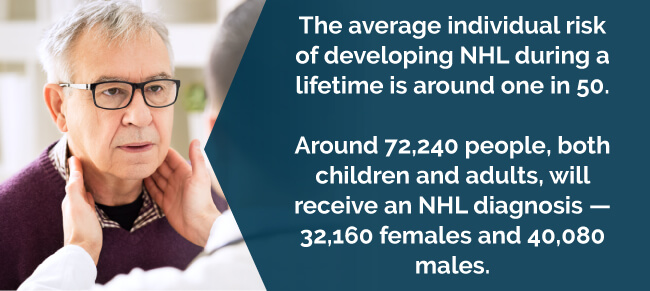
Cancer is a heartbreaking disease that has been a tremendous challenge for its many sufferers. The illness doesn’t discriminate by age, race, gender or socioeconomic background. It affects all people, whether you’re struggling with cancer yourself or are supporting a loved one during their journey.
For centuries, people have used medical cannabis in different herb remedies. Scientists have recognized the herb’s many biologically active compounds, and anecdotal evidence for the benefits of medical pot is only getting stronger. Now, there’s promise in medical marijuana for non-Hodgkin’s lymphoma.
As mentioned earlier, for centuries cannabis has been a part of various herbal remedies. There are components in medical weed called cannabinoids that have therapeutic benefits. Two components that are beneficial in marijuana for non-Hodgkin’s lymphoma are delta-9-tetrahydrocannabinol, or THC, and cannabidiol, or CBD. Researchers are continuing to study other cannabinoids.
Find A Doctor Find A Dispensary
Anecdotal evidence for medical marijuana to treat cancer continues to get stronger. Both animal models and human cells research show weed can kill cancer in four main ways. These include:
Although there is a lack of finished trials in human studies, patients are taking matters into their own hands regarding their cancer treatment and finding success.
According to preclinical data published in the International Journal of Cancer, in animals with NHL, administering the R(+)-MA cannabinoid agonist has shown to stop the growth and spreading of cancerous tumors. Mice that received this cannabinoid agonist showed a 40 percent decrease in the weight of their tumor.
The proapoptotic and anti-proliferative effects of cannabinoids give the endocannabinoid system an opportunity to be a treatment option for individualized therapy in patients using medical cannabis for non-Hodgkin’s lymphoma.
The cannabis plant, early on, showed to be an effective treatment for easing side effects that chemotherapy and other harsh pharmaceutical treatments cause. Some symptoms cannabis and non-Hodgkin’s lymphoma treatment help ease include:
Medical marijuana has different compounds, and each has a different effect on your body. For instance, THC causes the “high” most cannabis users report. It also provides nausea and pain relief, along with reducing inflammation and acting as an antioxidant. CBD helps reduce depression, paranoia and anxiety, treats seizures and counteracts that THC “high,” which is good for users who don’t like that psychoactive feeling.
Studies also show people using cannabis for non-Hodgkin’s lymphoma, they need less pain medication.

Scientists more recently report that CBD, THC and other cannabinoids slow growth in cancer cells, reduce their chances of spreading and even cause them to die.
Many people with cancer report huge pain relief after they use medical pot. During consultations with cancer patients who are undergoing treatment, pain is a common complaint, usually due to their treatment. Cannabis provides them with direct pain relief, but also reduces their awareness of their pain due to the euphoric effects it provides.
Each strain offers its own distinct effect profile. While one strain may be effective for one particular symptom, it may not be useful for another. Therefore, finding the best strain for your NHL may take some testing on your part and a little research. Below you’ll find a compiled list of strains specific to NHL to help with your research.
Pain
Strains that contain high levels of CBD and THC together seem to provide the most pain relief because of their synergistic effects. However, strains that contain high levels of only one of these cannabinoids will work just as well. Recommended strains include:
Appetite Loss
High-THC strains are useful for tackling appetite loss. Indicas make great hunger enhancers, although you can get the same relief through hybrid strains without zapping your energy levels. Recommended strains include:
Nausea
Strains that contain some level of THC are beneficial for treating nausea. Vaporizing or smoking these strains will deliver the most effective and quick relief. Recommended strains include:
Fatigue
Sativa strains are typically best for fighting fatigue and providing you with an energetic and rejuvenating buzz. However, you’ll also find a lot of hybrids that do this. Recommended strains include:
Depression
Strains that enhance the mood and boost energy are most effective for depression. Citrus-smelling strains often contain a terpene called limonene. Therefore, to help alleviate your depression, use your nose to sniff out citrus strains. Recommended strains include:
Cannabis effects may vary depending on how you consume your marijuana and non-Hodgkin’s lymphoma treatment. Some good methods for NHL patients to get their cannabis therapy include:
You can experiment with different strains to find the best strain or strains for your NHL symptoms. Work with a local budtender and medical marijuana doctor in your area to find the beneficial combination of dose, method and strain. To get started with your cannabis and non-Hodgkin’s lymphoma treatment, you can search for a medical marijuana dispensary or doctor.
Find A Doctor Find A Dispensary
Non-Hodgkin’s lymphoma (NHL) is a type of cancer — more prevalent than Hodgkin’s lymphoma — that affects your lymphatic system. As tumors form in your white blood cells, or lymphocytes, you develop NHL.
The primary difference between NHL and Hodgkin’s lymphoma is the presence of the abnormal Reed-Sternberg cell. This Reed-Sternberg cell is in Hodgkin’s lymphoma only. NHL and Hodgkin’s lymphoma also have different types of treatment options.
Various types of cancers often spread to lymph nodes. But only the cancers that begin in your lymph tissue are lymphomas.
Your lymphatic system is part of your body’s immune system. The system helps tackle infections and other disorders. Additionally, your lymphatic system filters out viruses, bacteria and other unwanted substances.
Your lymphatic system includes your:
Since your lymphatic tissue can be in multiple areas of your body, NHL can start just about anywhere in your body.
There are two primary lymphoma types: Hodgkin’s and non-Hodgkin’s. Either can occur in both adults and children.

Many individuals with Hodgkin’s lymphoma have the traditional type where they have Reed-Sternberg cells in their lymph nodes. Hodgkin’s lymphoma is usually curable.
Various types of non-Hodgkin’s lymphoma form from different white blood cells, such as your T cells, B cells or NK cells. Usually, NHL forms from your B cells and can be fast-growing — aggressive — or slow-growing—indolent. In adults, the most common types of non-Hodgkin’s lymphoma are large, spread-out B cell lymphoma, which is aggressive, and follicular lymphoma, which is indolent.
The Sézary syndrome and Mycosis fungoides are other types of NHL that begin in your white blood cells in your skin. Another type, although rare, is primary central nervous system lymphoma, which begins in your white blood cells in your spinal cord, brain or eye.
The type and stage of your lymphoma determine your treatment and prognosis.
Hodgkin’s lymphoma is named for the physician Thomas Hodgkin (1798-1866). He was a Quaker family physician who studied medicine in Paris and Edinburgh.
Since the original Hodgkin’s lymphoma description, doctors have introduced different systems for classification. Over the past few decades, there’s been essential progress in NHL patients for their diseases regarding:
The approach to NHL has opened the doors to a paradigm of advancements in other types of cancer.
The incidence of non-Hodgkin’s lymphoma has been increasing steadily at around 4 percent each year since 1950. The five-year survival percentage of people in the U.S. is 71 percent.
As the American population ages, it’s likely non-Hodgkin’s lymphoma cases will increase in the coming years.

Non-Hodgkin’s lymphoma can occur at any age. However, in children, adolescents and younger adults, it’s a more common cancer.
Children’s cancers are often different than cancers adults develop. DNA cell changes in children early in their lives lead to childhood cancer, in some cases before birth. Childhood cancers aren’t strongly associated with environmental and lifestyle risk factors, unlike cancers in adults.
Most kids and teenagers who have cancer receive their treatment at specially designed centers just for them. Children get the advantage of having a team of specialists who understand the differences of cancer in adults and cancer in children.
They also recognize the distinct needs of children who have cancer. The children’s health care team typically includes:
Specially designed centers for children also have social workers, psychologists, nutritionists, child life specialists, physical and rehabilitation therapists and educators who can educate and support the entire family.
NHL’s physical symptoms may include:
Along with the physical effects of non-Hodgkin’s lymphoma, you may have to deal with a variety of psychological and emotional issues. You’ll have to make important decisions about priorities you wouldn’t normally have to make. Keep in mind your situation is different from others. Therefore, there isn’t any “right” way for you to feel when you’re going through this situation. You’re the only one who can decide how you’re going to cope with your NHL, your treatments and your daily life management.
It’s always overwhelming and shocking to receive a cancer diagnosis. You’ll likely feel either numb or intense emotions like anger, panic, despair, depression, guilt or outrage.
Anxiety
Anxiety is a normal part of receiving an NHL diagnosis. However, high anxiety can significantly interfere with the quality of your life. It can worsen your pain, ruin your sleep and make your life miserable. Anxiety can interfere with your daily routine and activities if it gets severe enough.
Worry or Fear
When you face the unknown, you’ll experience some fear and worry. From the time you receive your NHL diagnosis, going through your treatment and after your treatment, you’ll have many unknowns and questions that won’t have clear answers.
It’s normal to have some fear and worry while facing many unknowns and decisions. They can impact your life in various ways such as:
All these things can cause concern and will likely impact your emotions.
Anger
Anger can include a wide range of feelings, from mild frustration and irritation to full-blown fury and rage. Being upset and feeling angry about going through this is a common emotion most patients and their families experience. Your anger may even connect with other non-visible emotions, such as panic, anxiety, fear or helplessness.
Sadness and Depression
When receiving a non-Hodgkin’s lymphoma diagnosis, you and your loved ones will no doubt feel distressed and sad. After all, things will change dramatically. You might not be able to do things you’d like to do. You may be unable to work, or you may lose some self-care management skills. Any of these things can cause distress and sadness.
However, depression differs greatly from sadness. Depression has more symptoms and lasts longer. Depression can have an enormous impact on your ability to live a healthy, meaningful and enjoyable life. It’s a serious mental condition you must address to maintain your quality of life.
Affects Relationships
NHL doesn’t just change your life, but the lives of everyone around you. It’s important that you share your NHL experience with others. But, although many relationships grow stronger with a cancer diagnosis, others are strained.
According to American Cancer Society, non-Hodgkin’s lymphoma facts include:

Physicians refer their patients to an oncologist who will evaluate them and prescribe treatment. Your treatment plan will depend on certain factors, which include:
If your NHL is slow-growing and you’re not experiencing any symptoms, you may not need treatment right away. Instead, your doctor will monitor you carefully. If you do require treatment, there are multiple options your doctor will discuss with you that they’ll either prescribe alone or in combination. These NHL treatments include:
Chemotherapy
Your doctor may administer chemo by injection, or you’ll take it orally by mouth. Chemo kills cancer cells.
Some side effects may include:
Radiation Therapy
Radiation therapy at high doses shrinks tumors and kills cancer cells. Some side effects may include:
Stem Cell Transplant
Stem cell transplant allows you to receive large doses of radiation therapy or chemo to kill the lymphoma cells standard levels of therapy might not kill. Some side effects of a stem cell transplant may include:
Biological Drugs
Biological drugs are medications that improve your immune system’s ability to fight off cancer. Doctors use monoclonal antibodies in treatment for non-Hodgkin’s lymphoma. Some side effects of biological drugs may include:
Radioimmunotherapy Medications
These medications consist of monoclonal antibodies that move radioactive materials straight to the cancer cells. Some side effects of radioimmunotherapy medications may include:


Please allow us to access your location to find local dispensaries.
VIEW ALL DISPENSARIES ➔